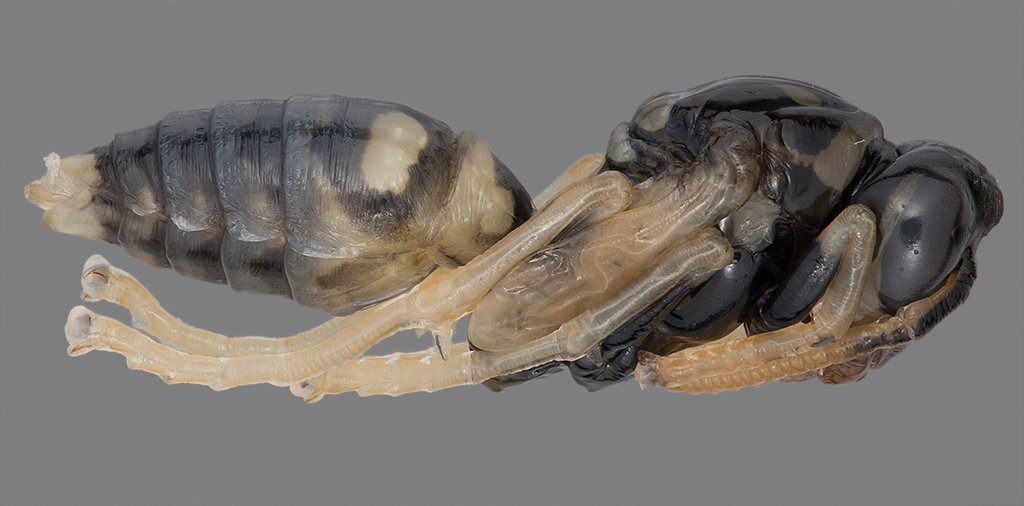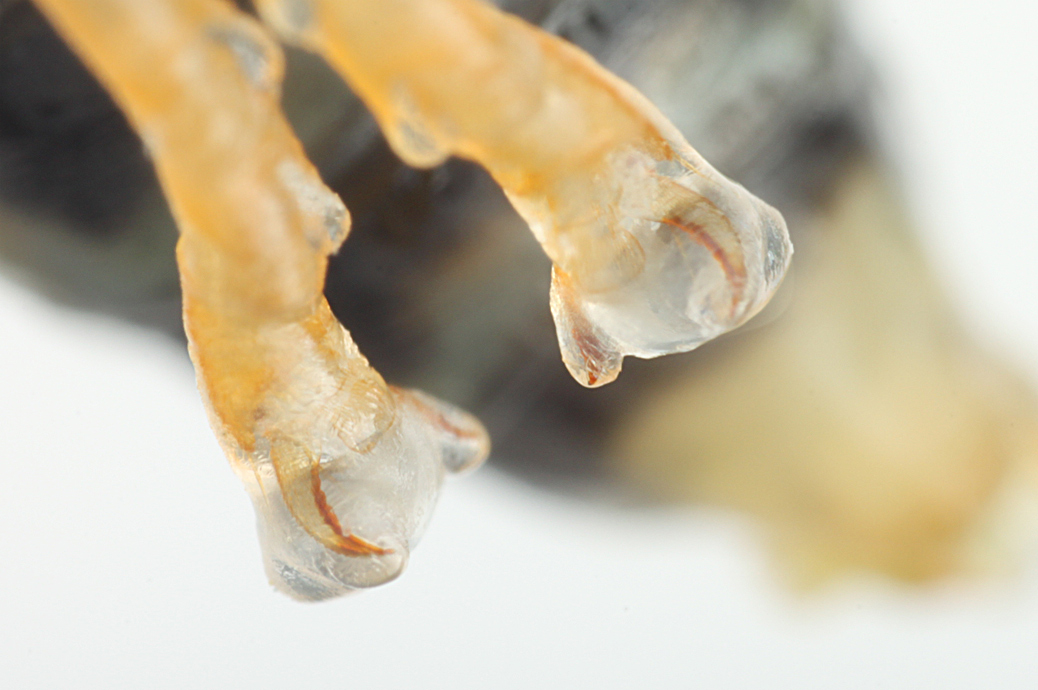It was a small nest, only a couple of dozen cells in various stages of development. Two of the cells were capped with silk, indicating that their occupants were in the process of pupating.
When I removed the silk caps, this is what I found:

In the center is a cell that was not capped. It contains a nearly mature larva.
The other two cells are the ones that were capped. They contained one fully developed pupa (on the left) and one pre-pupa (on the right). By "pre-pupa", I mean a larva that had stopped eating some time ago and has done a lot of internal restructuring but has not yet molted into a full pupa.
Here's what those two looked like when removed, pre-pupa on top, full pupa on bottom:

I think it's interesting to see how much of the adult gross morphology is present in the pupa immediately after the pre-pupa molts. The usual story of complete metamorphosis is that "during the pupal stage" there is massive restructuring of all the body tissues, essentially growing an adult body from the dissolving tissues of the larva. In the grand scheme of things that's a pretty good description, but it doesn't really capture how much of that restructuring actually happens before the final molt to pupa, inside the last larval skin. The pupa that you see here -- with legs, wings, and antennae fully represented in the body form -- is very close to exactly what squirms out of the last larval skin when it finally molts. There is probably some elongation of limbs, not possible within the skin, but all the parts are there by the time the molt occurs.
Even in the pre-pupa, the pupal eyes are clearly visible through the skin. This is easiest to see in the first picture, comparing the center and right forms.
The images above were shot back on June 19, now 9 days ago. When I re-checked just now, the pupa had developed as follows:

I rather imagine I'll have a new wasp in a day or two. I suppose I should put that pupa in a container now...
--Rik

